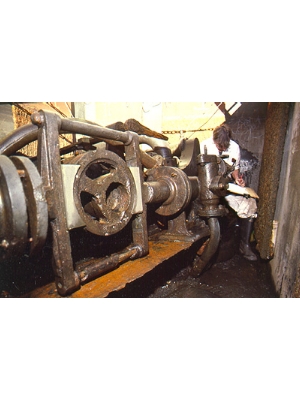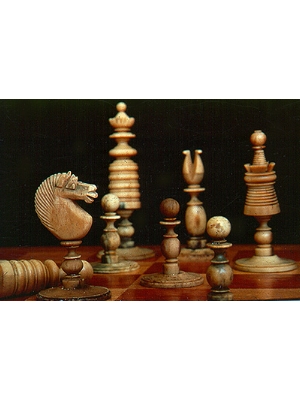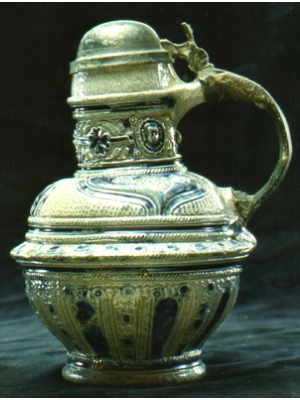Recovered from the iron steamship SS Xantho in 1985 by the Western Australia Maritime Museum, this is the first steam engine to be salvaged from the sea-bed. Conserved components of the engine form part of the new SS Xantho exhibition where the history of its owner Charles Edward Broadhurst and his family is also told.
Western Australian Maritime Museum
Maritime museum focussing on display of shipwreck material. Housed in a registered historic building - the former convict built government commissariat (built in 1851, with later additions). A major 'icon' is the reconstructed hull of the Dutch East India 'Batavia' (1629) and associated objects. The Batavia mutiny story is a major feature.
Items
Engine

Chess Pieces

Stoneware Jug
Blue/grey saltgaze stoneware jug with pewter lid/handle

The pewter lid has an unidentified Pewterer's mark inside the dome of the lid.
Tumbler
Glass Tumbler
Wreath of leaves engraved around rim; pictorial motif depicts a building with towers and turrets with flagstaffs possibly representing the castle of Middelburg. Possibly a personal possession of one of the officers as it was found in the stern area of the wreck site.
Ship's Bell/ Silver Coins/Stoneware Jug
Saltglaze stoneware jug (part) marked 'Boston' - The port from which the Rapid sailed and one of the indicators of the identity of the wreck.
